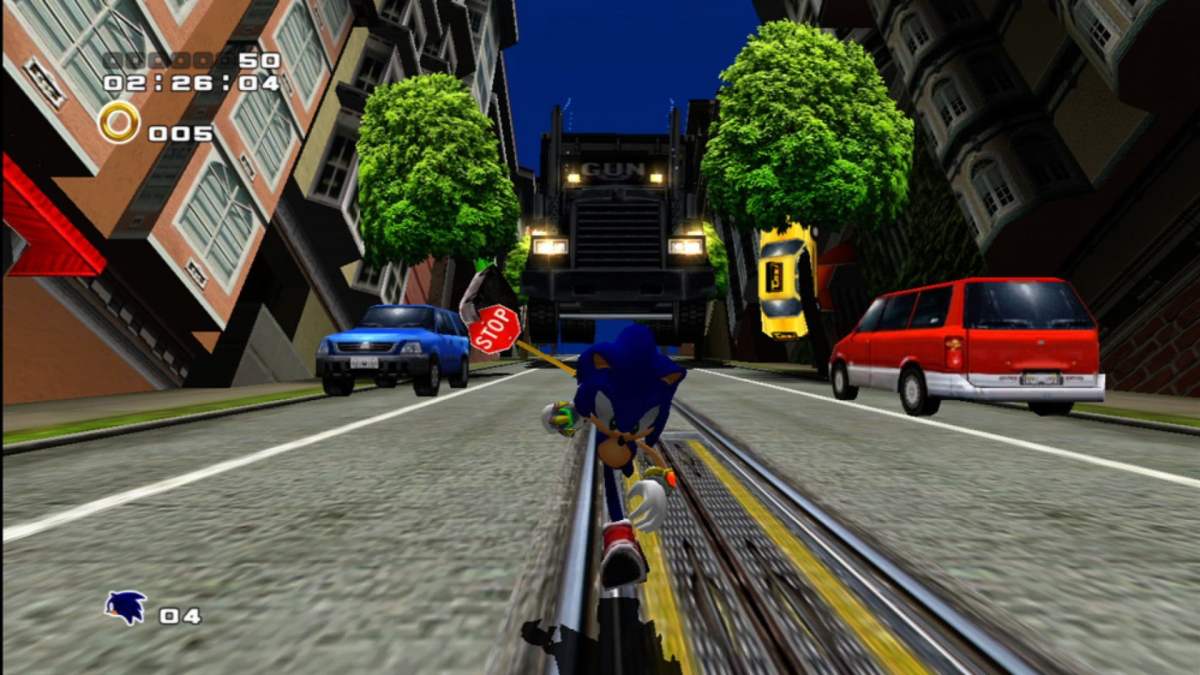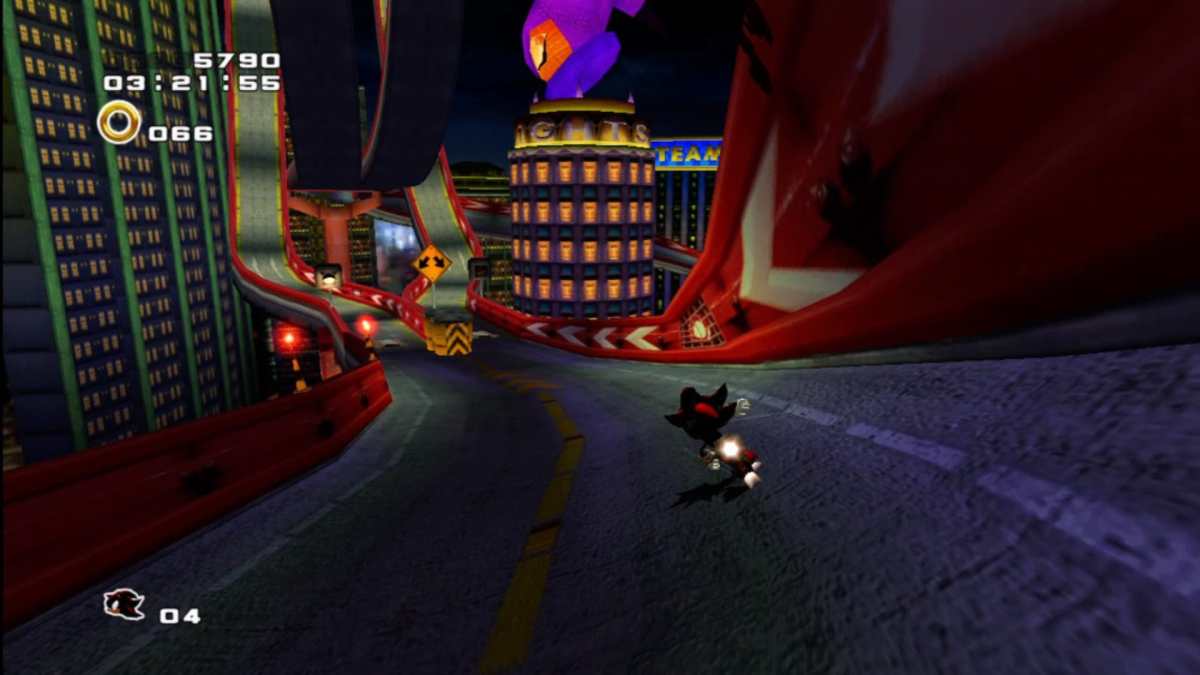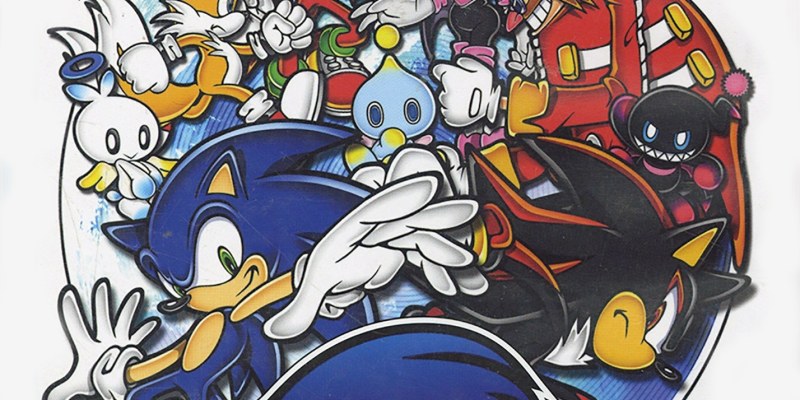It’s always a strange time to be a fan of Sonic the Hedgehog. The current version of strange involves the fact that, while Sonic has enjoyed two recent film blockbusters and a budding cinematic universe, the game franchise has been hammered since the mid-2000s with entries that vary wildly in quality. Where Sonic games were once the cool alternative to Super Mario, now they are the butt of jokes from gamers. But there was a time when Sonic games were an event to be excited about, and I believe that enthusiasm culminated in 2002 with the release of Sonic Adventure 2: Battle in the West. Even compared to the Sega Genesis games, Sonic Adventure 2: Battle might be the most important game in the history of the franchise.
Sonic defined Sega as a company, and it’s what propelled the Sega Genesis to stardom. Altogether, the original Sonic games on Genesis generated tens of millions of sales. The Sega Saturn clearly suffered when a new mainline Sonic game never arrived. Then Sonic Adventure brought Sonic back in a big way as the bestselling game on the Dreamcast, but with the PlayStation 2 effectively killing the Dreamcast and Sega exiting the hardware business, where could Sonic go without a console to call home?
Sonic Adventure 2: Battle wasn’t just important because it was a port of a Dreamcast game. It was the franchise’s major introduction to other platforms, Nintendo specifically. Sega and Nintendo had effectively buried the hatchet on a decade’s worth of adversity, and the benefits for both were clear. Nintendo got a new third-party developer with an already deeply passionate fanbase to develop for GameCube, which was lagging behind the PS2, while Sega got a new platform to release its games on that agreed with a lot of its design philosophies.
Just consider how Sonic Adventure 2: Battle did on the GameCube compared to its original release. The game sold about 500,000 units when it originally released, which is nothing to sneeze at given that the Dreamcast was already dead. But when Sonic Adventure 2: Battle launched on GameCube, it became the highest-selling third-party GameCube game in the U.S., clocking in at more than 1.7 million copies sold worldwide in its lifetime.

That introduction to new hardware also allowed for a new generation to discover the fastest thing alive for themselves. To kids who had never owned a Sega system before, they saw a new game that magazines and games media were pushing hard. I remember reading an issue of Nintendo Power where Sonic the Hedgehog was boldly on the cover and a huge portion of the magazine was dedicated to his Nintendo debut. Kids my age didn’t know any of the history that Sonic had, positive or negative. We just saw a new and exciting game with screenshots that made us want to play it.
And those new fans like me wanted more of him. Shortly after Sonic Adventure 2: Battle debuted on GameCube, Sega followed it with Sonic Mega Collection, packaging seven of Sonic’s Genesis games in one neat $20 collection. This was probably one of the smartest moves that Sega made during that console generation. New fans hooked by Sonic Adventure 2: Battle could discover Sonic’s earlier outings in a cheap and affordable package, as well as prepare for new games like Sonic Heroes. If Sega had released Sonic Mega Collection first, it probably wouldn’t have done as well at endearing new fans to the series as Sonic Adventure 2: Battle did.
What began with Sonic Adventure 2: Battle became an important relationship between Sega and Nintendo that would facilitate the future of the franchise. Sonic and Mario would go on to compete at many Olympics and fight to the finish in Super Smash Bros., and several Sonic games would come exclusively to Nintendo platforms like Game Boy Advance, Nintendo DS, Wii, and Wii U. Like with the rest of the franchise, these games reached high and low points in the Sonic canon. Depending on whom you ask, Sonic Adventure 2: Battle can also represent the franchise at its best and at its worst.

There are some fans who hold the game up as being the pinnacle of the franchise. Both the 2001 original release and its 2002 port received a positive critical reception. Reviews praised its healthy gameplay variety, exciting and fast-paced stages as Sonic and new nemesis Shadow, and an outstanding soundtrack. Consider that future 3D Sonic titles like Sonic the Hedgehog 2006, Sonic Unleashed, and Sonic Forces tried to emulate the positive elements of Sonic Adventure 2: Battle, but just weren’t able to (according to most fans and critics). These descendants failed because they didn’t commit as fully to their core gameplay mechanics.
All three of these games had several different gimmicks that felt half-baked. Sonic the Hedgehog 2006 is probably the strongest example of this, as it had tons of different characters within its three main campaigns who all controlled slightly differently but all blended together in a homogenized mess. Sonic Adventure 2: Battle fully embraced its three different gameplay styles and made each of them substantial instead of just a back-of-the-box feature.
For many fans, running through loops with Sonic and Shadow is fun and exhilarating. Going through shooting galleries with Tails and Eggman makes you want to rack up the highest score. Treasure hunting with Knuckles and Rouge allowed players to explore some of the largest stages ever seen in a Sonic game.
However, other fans might regard its myriad of gameplay types as a negative. By focusing on three gameplay styles, it makes the game into a jack of all trades, master of none. People will praise the speed stages for their high-velocity thrills but groan at having to wander around treasure hunting stages with Knuckles or Rouge for a maddening length of time or become frustrated at Tails and Eggman’s clunky walker controls. Then you have criticisms centering on its plot being nonsensical, the game’s infamous sound design, and Shadow exemplifying edgelord design.

But those criticisms almost don’t matter because Sega succeeded in its initial goal. Millennials were endeared to the series thanks to Sonic Adventure 2: Battle. When fans think back about the game, they don’t think about how the game’s plot is ridiculous or its uneven game design. They think back to stages like City Escape, raising Chaos in the Chao Garden, or getting pumped when “Live and Learn” starts to play. To this day, you will still have a few fans ask in some comment sections why they don’t just make a Sonic Adventure 3 instead of whatever Sega may be cooking up, entirely because of these fond memories of the Adventure series, Battle in particular.
Sonic Adventure 2: Battle cemented to young kids who Sonic the Hedgehog was and why we should care about him. There have been better Sonic games since Sonic Adventure 2: Battle, like Sonic Mania, Sonic Generations, and arguably Sonic Colors, but those games didn’t do nearly as much to energize or even create a new fanbase. Maybe Sega will be able to have that effect with Sonic Frontiers, but even if that game is phenomenal, it probably won’t have the same historical significance or reach the same highs that Sonic Adventure 2: Battle had.
